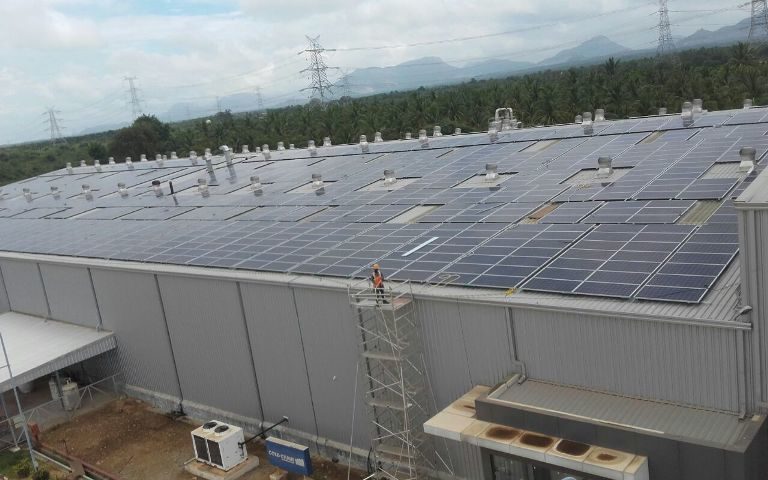India’s solar sector is riding on a wave of optimism. The auction mechanism is working and tariffs are getting more and more competitive. The much talked about “grid parity” has since long been realized. Even tariffs of less than Rs.2.50 per kwh no longer raise eyebrows. Though India currently has around 16 GW of grid-connected capacity, which is far less than the targeted 100 GW by 2022, there is a plan in place that gives a feeling that we are indeed working towards a goal and not merely wishing things to happen. In the next two years, the plant to auction as much as 80 GW has been formulated and government appears resolute in its implementation plan.
The topic of discussion here is not about solar power capacity but whether India should actively pursue backward integration in the solar PV value chain. This it to ask: Should India should focus on manufacture of solar cells? The question is even more pertinent in the backdrop of the recent concept note released by the Union ministry of new and renewable energy on a proposal to build out India’s manufacturing supply chain, including polysilicon, wafers/ingots, cells and modules. MNRE is proposing a bouquet of subsidies and incentives including direct financial support of more than Rs.11,000 crore for manufacturers to expand and upgraded their capacities.
India’s current solar cell capacity is around 3.2 GW per year, but just over half of this is operational. Likewise, the annual solar module capacity is 8.4 GW but about one-third of this is unutilized.
When the National Solar Mission was launched in 2010, one of the stated objectives was to encourage manufacture of domestic solar equipment. This ideology was supported by including the “domestic content requirement (DCR)” in some tenders. Despite this, much of the current installed solar capacity is based on imported cells and modules. The reason for this is quite evident: international prices of solar cells and modules have fallen so perceptibly that using local equipment does not make economic sense. According to some reliable estimates, India’s current solar cell capacity is around 3.2 GW per year, but just over half of this is operational. Likewise, the annual solar module capacity is 8.4 GW but about one-third of this is unutilized. It is very clear that given the choice, a solar developer in India will resort to imported photovoltaic (PV) cells and modules if he has to remain competitive in the tariff-based ecosystem.
Also read: Rooftop solar must accelerate
China has invested heavily in creating global-scale capacity for solar PV cells and modules. Currently, it has a worldwide market share of 50 per cent that will soon rise to 75 per cent, according to leading experts. In trying to create local manufacturing capacity for solar PV cells and modules, India would of course to justice to the “Make in India” philosophy but can India support its massive solar ambition with local equipment? The answer is a clear no. What India lacks is R&D capability in the solar PV domain. If India does get technology from foreign collaborators, does it have the R&D backbone to build on the technical knowhow? Even if it does succeed in getting technology, will it get the latest technology? India will be able to compete with international suppliers only on the surface. With countries like China expected to continue with their R&D programmes, there could be a possibility of a major shift in paradigm. For instance, solar cell efficiencies that today are in the range of 20 per cent, could significantly increase. This could rapidly make domestic (Indian) equipment redundant.
India could look at emerging areas like electric vehicles and energy storage.
Experts feel that India should look at the next frontier without worrying too much about backward integration-oriented competition. For instance, when cellular telephone entered the market, they of course did not start from wired connections. India is strong on the computer software front; it is a distinct advantage that India has over China. Given this, India could initiate work in areas like Internet of Energy, block chain management or any software-centric areas where India could have an edge over China.
Solar energy is now an established field and it looks improbable for India to make a mark at the level solar cells (or silicon wafers/ingots), which represents the early part of the value chain.
There are other emerging areas like electric vehicles and energy storage where India’s entry could prove more result oriented.
This article’s author, Venugopal Pillai, is Editor, T&D India. Views expressed here are personal. The author may be contacted on venugopal.pillai@tndindia.com)

